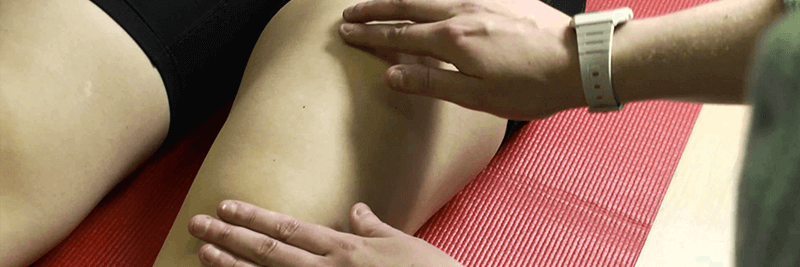Quadriceps Is One Of The Largest Muscles Of The Body. Certainly One Of The Most Well Known Ones. It Is Strengthened And Lengthened In So Many Yoga Poses But Do You Really Know How To Tap Into Its Full Potential? Read On To Find Out How To Use Quadriceps To Deepen Poses And Enhance Your Classes.
FIRST, THE ANATOMY
As with so many things that are superficially familiar, it is easy to know a bit about quadriceps but maybe not as much as you could. You don’t need to be a medical professional to know it is found on the front of the thigh and it works the knee, but exactly how does it do this?
Lets start with the basics: the quadriceps is made up of four parts.
- Vastus Medialis — This part comes from the upper two-thirds of the front of the femur. The muscle, as the name suggests, is on the inner side of the thigh and makes up the shape of the leg on that side, especially near the knee.
- Vastus Lateralis — Opposite to the medialis, vastus lateralis comes from the upper, outer femur and creates the shape of the outer leg.
- Vastus Intermedialis — This part sits between medialis and lateralis on the front of the thigh. It’s origin is the upper, outer aspect of the femur.
- Rectus Femoris— This one comes from higher up. Its origin is a largish tendon from the anterior inferior iliac spine on the front of the pelvis. The muscle passes straight down the front of the thigh sitting mainly on top of vastus intermedialis.
All four parts of the muscle come together to make one big tendon over the knee before attaching on to the upper part of the front of the tibia at the tibial tuberosity.
At about the level of the knee joint, the largest sesamoid bone in the body nestles in this tendon. More commonly known as the kneecap, this bone stops the tendon rubbing on the front of the femur as the knee bends and straightens as well as making the muscle stronger. By increasing the mechanical advantage of the muscle, the knee cap boosts the strength of the quadriceps by a whopping 20%.
See Also: Navigating an Injury: Don’t Let It Get between You and Your Mat
FASCINATING QUADRICEPS FACTS
1. All four parts of the muscle act to straighten the knee.
2. Rectus femoris, is a two-joint muscle. Because it starts above the hip joint and finishes below the knee, this part of the muscle influences both joints. Rectus femoris works with the iliopsoas to flex the hip and with the other three parts of quadriceps to extend the knee.
3. Quads is part of the superficial front line — a continuous line of connective tissue, or fascia, running up the front of the body from the jaw to the toes. Modern lifestyles and repetitive sports like cycling and running tend to reduce the mobility in this fascial plane, but yoga asanas are fabulous at reversing these changes and gaining length in this area.
4. When your doctor tests your reflexes and taps on the quads tendon, it is a totally automatic reflex that produces the knee jerk. The tap causes a quick stretch in the tendon and stimulates the sensors in the muscle, called muscle spindles. To prevent damage by over stretch of the muscle the body triggers contraction of the quads which is what you see as the knee jerk. And no matter how hard you try — you’ll never be able to stop it. It can be great fun trying though!
See Also: Triathlons: Running, Cycling, Swimming… Yoga?
QUADRICEPS: THE FACILITATOR
This is where we start to think in terms of pairs of muscles working together in the body. In this case quadriceps and its antagonists, the hamstrings, on the back of the thigh. As one muscle group contracts, the other automatically relaxes to allow movement. This is called reflex inhibition and is happening all the time as we move around. In this case, contracting the quadriceps relaxes the hamstrings. But why is this so important? And how can we use it to enhance our practice?
This is one of those practice tips that can revolutionise the way we use our bodies in asana. Learning to gently activate quads during forward folds will deepen those poses and makes a huge difference to our range of movement. It is a tricky thing to get to grips with though, especially for anyone needing to keep knee flexion in forward folds — it is a challenge to make quads work without straightening the knee. Having said that, it is a game changer and regularly cueing students to draw their knee caps gently up the front of the thigh during a class can make such a difference to any asana that lengthens the hamstrings.
AND NOW TO LENGTH AND STRENGTH
We have so many options at your fingertips for strengthening quads:
- Warriors 1 & 2, Parsvokonasana, High Lunges — …basically any standing poses with the front knee held flexed will strengthen the quads.
- Concentric and eccentric work — Starting in high lunge then deepening the lunge to touch the back knee to the floor (eccentric) before straightening both knees (concentric) is a great quad workout. Repeating it a few times on each session adds a strong dynamic element to a class and can help to pick up flagging energy. Be wary of doing too many reps with beginners though, it really is hard work!
- Squats — Any kind of squatting (including Chair Pose!) or standing up from a squat works the quads.
Options for lengthening are there aplenty too but remember that any stretch should be comfortable not painful. The sensation of tightness should reduce or stay the same as you hold a stretch. If the tension is increasing, you are pushing too hard.
- Rectus Femoris — Find hip extension and knee flexion. Poses like low lunge with the back foot pulled towards the buttocks with your hand or a webbing strap achieve this. The back leg of Dancer’s Pose stretches rectus femoris too.
- Vastus Medialis, Lateralis and Intermedialis — A simple Child’s Pose is a great way to lengthen these parts of the muscle as it achieves knee flexion with hip flexion. Here rectus femoris is relaxed and all the stretch falls on the vasti.
I thoroughly recommend getting to know your quadriceps. These muscles really can make such difference to practice. Equally easy to ignore and overwork — it is a fine balance to work them optimally without sending students away with quivering knees and a few days of soreness. A few classes with emphasis on this muscle group will reap rewards in students really quickly.













